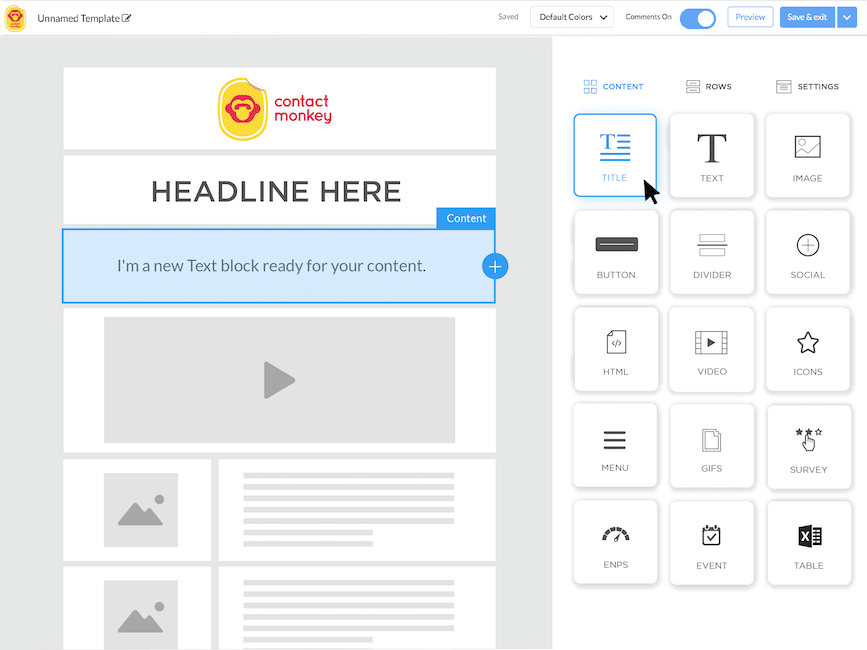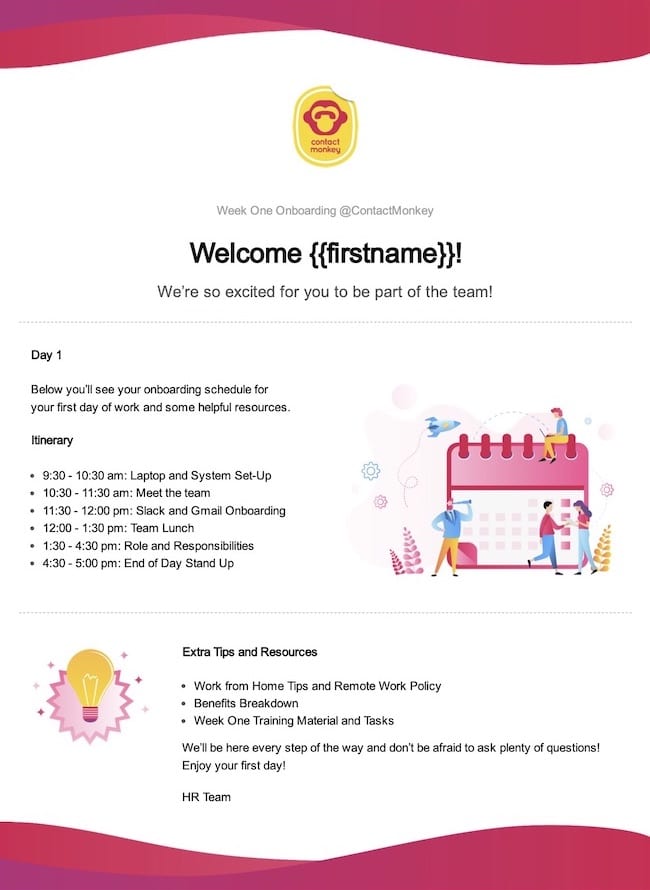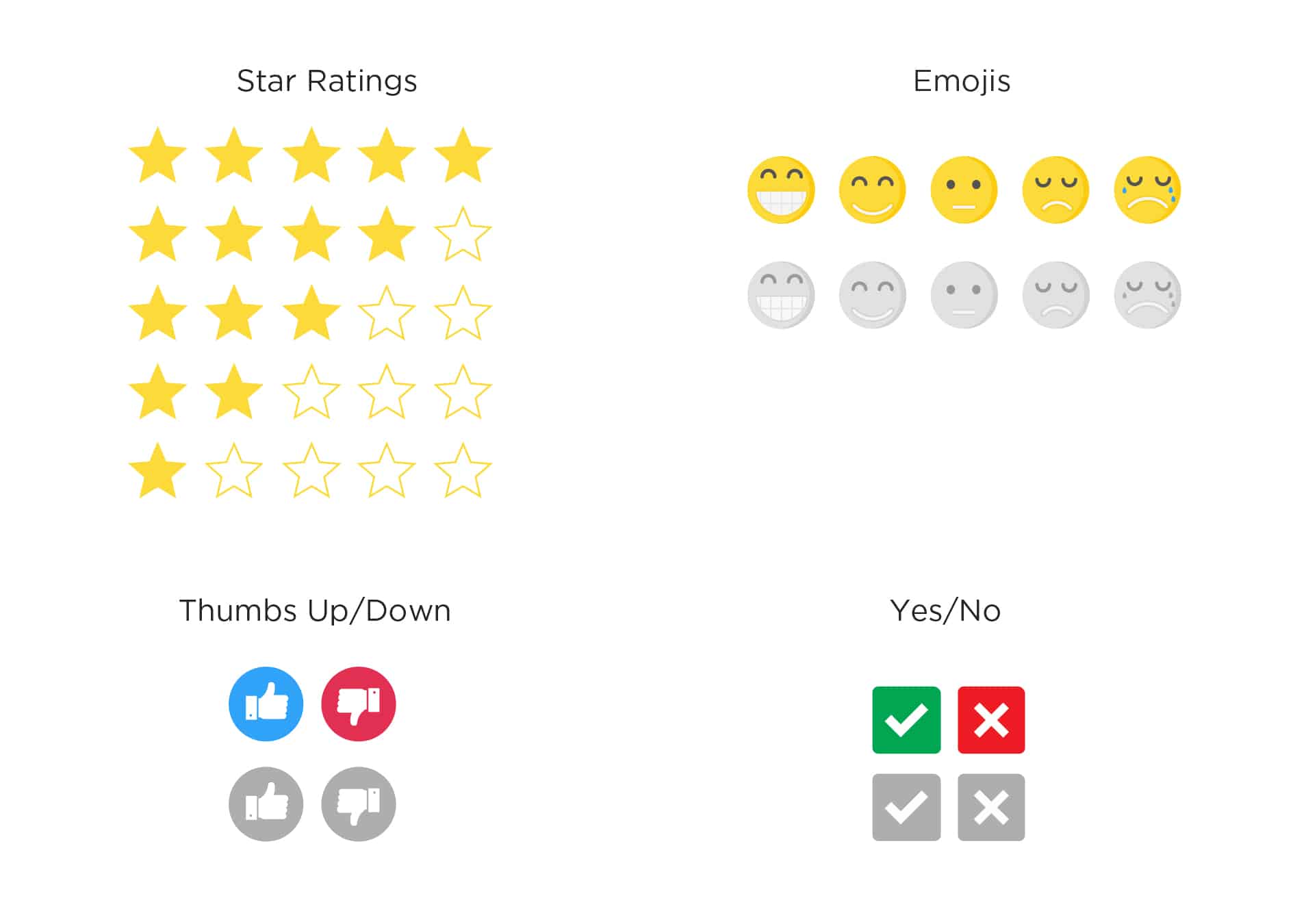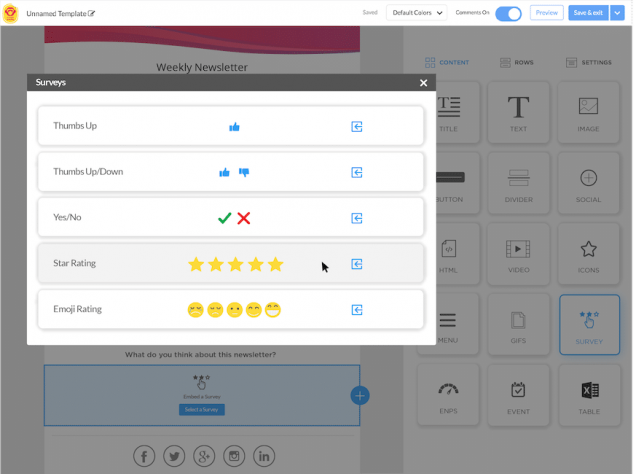20 Internal Communications Challenges and the Best Solutions
The job of an internal communications professional is to provide relevant and timely updates to their team. But there will be times when things don’t go as planned. When internal communications challenges arise, being prepared and strategic about your solutions will help resolve the problem quickly.
Seeing as internal communications are what keep your teams aligned and in-the-know, problems in this area can impact your bottom line.
If communication flows are disrupted, or employees miss key updates, confusion builds. It becomes hard for your employees to do their best work, let alone stay engaged in their roles.
To avoid long-term internal communications problems, it’s important to be proactive. Alongside your internal communications plan, you need to have a plan for when things go wrong. In this post, we’ll break down the most common internal communications challenges and what to do when they arise.
Connect and engage teams quickly with ContactMonkey
Get Started
The Impacts of Internal Communications Challenges on Your Business
Poor internal communications can do serious harm to your business. And yet, it can be hard to see the impacts in the midst of the ebb and flow of the workweek.
Featured Resource: Internal Email Benchmark Report 2023👇
How do your internal email performance metrics compare to 20 key industries? 
Download this resource
Internal communications problems don’t cause damage to your company in one big swoop. This is what makes it hard to detect the consequences. But it can also make it easier to troubleshoot issues before they blow up.
The way the impact of poor internal communications works is through a domino effect. Just like strong communication can increase employee awareness and engagement, ineffective communication leads to employee disengagement and confusion.
A lack of information and resources cause productivity to suffer, inspire frustration among employees, and lead to poor employee morale. This sequence of events often leads to employee resignation and broader issues with employee retention for your company.
Here are just a few of the other impacts of internal communications challenges:
-
Low employee motivation
-
Decreased employee engagement
-
Less workplace productivity
-
Ineffective customer service and low customer satisfaction
-
Product defects and service mismanagement
-
Greater employee turnover
-
Increased employee stress and poor employee wellbeing
20 Internal Communications Challenges and Solutions
Internal communications is all about getting the right information into the right hands at the right time. When this doesn’t happen, you’re faced with internal communications challenges. Here are a few examples of internal communication problems faced by today’s internal communications teams and how to tackle them head-on.
1. Lack of transparency
When management withholds important information about their decisions, issues within the organization soon arise. When employees begin to lose trust and confidence management, it’s often because their employer does not prioritize effective leadership communications.
They also become less comfortable asking questions, which creates roadblocks in communication across the company.
Solution:
Foster a culture of transparency across the office. Continuously encourage employees to ask questions and be thorough when elaborating on company decisions yourself.
Make use of internal communications tools that actively encourage transparency like ContactMonkey. With embedded question and comment boxes, ContactMonkey’s email template builder encourages employees to continuously share suggestions and express concerns from internal newsletters and leadership updates sent from Outlook and Gmail.
2. Ambiguity across communications
Very often, it’s not a lack of internal communication that creates problems across a company. Rather, it’s the way that communication is delivered. If employees are uncertain about deadlines, or where to register for events, it usually means there’s a problem with information distribution.
Solution:
Ensure that your communications are synchronized across multiple platforms. For instance, your slack messaging should be in tune with your newsletter content, and vice versa.
Also remember to keep internal emails short and concise to avoid confusion—we recommend 200 words or less. If you need to add resources, embed them as links, which your employees can always access. With ContactMonkey’s email template builder, you can easily do this by embedding smartlinks directly into emails.

Try our email builder for free by booking a ContactMonkey demo today.
3. No consistent communication channel
It’s important to take stock of how your communications are distributed and through what channels. Perhaps your employee town halls are engaging and employees love them. But if they happen once in a blue moon, it’s hard to share information consistently.
Without consistency, it’s easy for employees to lose touch with what’s going on in the company, and become disengaged. This is doubly important if your position requires you to effectively communicate across different departments and teams.
Solution:
Create an annual or quarterly internal communications plan. In it, you should clearly outline your communication methods, channels, and campaigns. Then, use an internal communications content calendar to schedule communications at regular intervals.
Whether it be your employee newsletter, communications for higher education, or town hall, make sure there’s consistency, and that employees are never left in the dark. To make informed decisions, gather internal communications analytics, or conduct a pulse survey to see when, where, and how employees engage the most with your content.
4. No clear channel to ask questions and clarify concerns
Team leaders who don’t make time to answer employee questions won’t ever be able to properly mentor and train their teams.
In fact, when employees are afraid to ask for, and give feedback, they won’t be able to receive important information that helps them do their job well. They also won’t be able to deliver key messages to customers, and business performance will ultimately suffer.
Solution:
Whether it’s following a weekly standup, or your employee newsletter, always make sure to encourage questions from your teams. Asking for help can be tough for everybody, so it’s important to make employees feel comfortable.
Embedding employee surveys into your internal newsletters is a great way to do this because feedback becomes simple and ubiquitous.
5. Lack of Employee Recognition
Employee recognition is an essential part of keeping your teams motivated and engaged. When hard work is recognized, it lets employees know that they’re headed in the right direction and that their efforts are valued by your team. Without employee recognition, employee motivation starts to plunge, and employee performance quickly follows suit.
Solution:
Make use of your communications channels to deliver consistent, thoughtful employee
recognition. With ContactMonkey, you can create digital employee thank you messages and take employee recognition to the next level.
Our drag-and-drop email template builder lets you add images, gifs, email tables, and even videos to turn your next company newsletter into an employee wall of fame.

6. Misalignment between employees and company goals
For business success, employees across different departments and teams in your company need to be aligned. Say you were to ask employees what your company’s overarching goal was for the next quarter, could they tell you? If your staff cannot answer these sorts of questions, it’s likely that you haven’t communicated your goals clearly.
Solution:
Communicate your company mission early, coherently, and consistently. Your internal communications need to showcase your brand identity, including brand graphics, slogans, and internal brand voice.
An internal communication software like ContactMonkey makes it easy to do this at scale. Build responsive HTML email templates for your employer brand awareness initiatives and track metrics such as open rates, clicks rates, and pulse survey results.
7. Overlooking remote employees
Since the COVID-19 lockdown, nearly 16 million corporate workers across the United States went remote. Now, as some return to the office, and hybrid work takes over, it’s important to not overlook the importance of engaging remote employees. Without face-to-face interaction, lagging on employee communications becomes easy. But it can make remote employees feel isolated, out-of-the-loop, and undervalued.
Solution:
To engage remote employees, you have to target the channels they use the most. Focus on amplifying written communications and virtual events. In a remote world, simple plain text emails just won’t cut it. Make sure you’re using an interactive employee communications software where you can tap into sight and sound.
Using an HTML email template, you can add videos from your leadership team, embed funny GIFs, and add a range of imagery. This adds personal touches that may be missing across written emails. With ContactMonkey, you can also use your newsletter to promote and manage virtual events, or draft effective return to work communications. Read our blog on virtual team building activities for a list of engaging remote events.
8. Lack of consistency across communications
Across large organizations, communications can often work like a game of broken telephone. Your leadership team makes a decision, and when the message reaches various levels of teams, it has already changed.
Maybe it’s the tone of the message, or maybe it’s the content itself. Regardless, it makes your company appear not united, creates a disjointed understanding of your company goals, and builds confusion.
Solution:
Consistent messaging begins with choosing effective internal communication tools. You want to make sure your IC software allows you to measure employee engagement in real-time, while enabling instant follow-up.
There are many tools on the market that help increase email engagement. But ContactMonkey is the only dedicated tool that empowers you to create, track, and measure your communications from a single platform. Book a free demo to see if it’s the right solution for your business.
9. Failing to Measure Your Internal Communications
Say you’re trying to reduce workplace safety. You have all the documents ready to go in your company-wide email. You’ve even digitized safety forms and created mobile checklists.
But when a crisis occurs, how do you know that you’ve reached your whole team?
If you can’t measure internal communications metrics, there’s no way to know if employees actually engaged with your message.
Solution:
With precision email tracking software, you know when you’ve reached your whole team and who didn’t get the message. Now if you want to step up employee engagement with your messages in the long run, you’ll need more information.
Start by checking how others in your industry are doing and ensure that you’re meeting industry standards with ContactMonkey’s Internal Email Benchmarks Report. Once you have a good idea of where you should be headed, use ContactMonkey’s precision analytics to see your:
-
Click-through-rate
-
Read time
-
Most popular clicks
-
Event registrations
-
Detailed campaign comparison
10. Lack of leadership communication
When leadership doesn’t make time to directly communicate with staff and fails to actively engage in the company’s internal communications strategies, it spells trouble.
In fact, poor leadership communication leads to a fundamental disconnect between employees and leaders. Think about it—if leaders don’t care about promoting communication, why should employees? When it’s your turn to give employee feedback, they will be less receptive.
Solution:
To ensure that senior leaders are on board and aligned with your internal marketing strategy, your internal comms team needs to clearly explain the objectives of your plan.
Talk about the ROI of employee engagement, and if need be, make a business case for internal communications software.
Most importantly, showcase engagement metrics for any content written by leadership and demonstrate the value of such communications by tying it to data.
11. Poor onboarding communications
The first three months at a company are vital to the success of a new hire. If this period is filled with employees digging through paperwork, and running around overwhelmed with confusion, the onboarding process will be counterproductive.
Solution:
Employees need to receive a clear, step-by-step onboarding plan, where key resources are included and easily accessible. The best way to go about this is to distribute onboarding communications across a single channel, so employees always know where to find essential information.
With ContactMonkey’s customized employee onboarding template, you can organize key information for your new hire in a clear and dynamic layout. Items like meeting agendas and employee coaching schedules each have their own dedicated section in the email.

At the end of each message, you can add a single pulse survey question to see if employees found the resources helpful. Once the email is off, track engagement and feedback using your ContactMonkey analytics dashboard.
12. Poor interdepartmental coordination
One of the biggest internal communication problems within big corporations is interdepartmental disconnect. Employees become entrenched in their own teams, departments, and projects. They work on a range of similar tasks that are unique to their position.
As a result, it’s easy to lose touch with the larger company goals and how different departments contribute. If a solid flow of interdepartmental communication doesn’t exist, your business may ultimately witness a breakdown in communication, and even conflict between departments.
Solution:
Slack groups for interdepartmental sharing and company-wide virtual town halls are excellent strategies for improving cross-department communication. Equally important is having a synchronized channel for company-wide news.
A company newsletter ensures that your IT team is consistently in the loop about your sales team’s projects and the sales team knows all about what’s happening in marketing. While this may seem small, it’s important for building a cohesive understanding of the company and a strong company culture.
You’ll have to also encourage employees to get interested in, and engaged with, what others are doing. By using an email design tool with feedback options, you can create an ‘employee recognition’ segment in your newsletter. Then, use it to encourage team members to recognize each other’s accomplishments through comments or emojis.

13. Lack of employee engagement
As an internal communicator, you spend time building out your internal campaigns and sending out updates on new safety initiatives or company policies. Then, when you follow-up with employees over slack or Zoom, they seem to have no idea what you’re talking about.
In the end, you feel like your efforts have been wasted. Unfortunately, research shows that only 13% of the workforce is highly engaged, and not more than 50% of executives know how to address the issue.
Solution:
The first thing to do in order to see whether you have an internal communication problem on your hands, is to collect the data. An internal communications audit can help you figure out exactly how much you’re lagging behind and in what areas.
Maybe you have good email open rates, but not many employees are clicking to register on company events. Or, you may have teams that are extremely engaged in one location and disengaged in another.
With internal communications tracking, you can get to the root of the issue, and build recommendations for improving your internal communications. ContactMonkey not only offers detailed analytics to support your audit, but also provides segmented reporting. This allows you to understand engagement across different roles, departments and locations.

14. Information silos
Information silos refer to situations when information simply gets lost. Whether it be a company policy resource or an employee benefits survey, documents get lost all the time. And it’s one of the biggest internal communications challenges that today’s IC teams are facing.
Solution:
When it comes to sending out vital resources, such as new safety protocols, make sure to exhaust multiple communication apps and channels. This ensures that employees receive the necessary information via at least one channel.
With asynchronous communication taking over the world of corporate comms, sending out communications through multiple outlets is proving to be useful. This is as long as colleagues recognize that there’s no need to respond right away, and things remain hassle free.
You may also want to consider creating a go-to resource hub for key resources on your company intranet or an employee newsletter.
With ContactMonkey, you can easily embed multiple documents and other resources, such as videos, into your newsletter. Attached files will appear as smart links rather than attachments so with the right subject line employees can easily find everything in one place.
15. Lack of employee feedback
Communications and HR professionals always want more employee feedback. That’s because open and honest feedback from employees is closely related with employee satisfaction and engagement. Inversely, a lack of feedback could lead to lower employee engagement rates.
Solution:
The first step is to have ample feedback tools in place. In addition to your annual company survey, you also need to check in with employees on a weekly and monthly basis. And this doesn’t have to consist of long, endless surveys.
You can conduct a fun employee survey with silly questions that help you get employees better and make them more comfortable sharing. Alternatively, you can encourage quick, regular feedback via single-question pulse surveys at the end of employee emails.

With ContactMonkey’s anonymous feedback feature, you can also ensure that employees feel comfortable giving honest and authentic feedback.

16. Ineffective internal communication technology
Today, there are so many tools for employee communications. However, many use outdated technology, are not optimized for all devices, or offer little in terms of design functionality.
This makes choosing effective internal communications tools difficult. You have to make sure the tool truly works through trial and error, while also earning buy-in from your team.
Solution:
ContactMonkey’s all-in-one internal communication solution addresses all your internal communications challenges head-on. With easy Outlook and Gmail integration, you can create, send, track, and measure your internal communications from a single spot.
At the same time, you can gather regular employee feedback to stay in touch with employee needs, questions, and concerns. Meanwhile, the responsive email template builder ensures that messages display properly across all devices.
17. Communications overload
Did you know that the average employee receives 120 emails daily? That’s on top of phone calls, group chats, text messages, and team meetings. The result: important information gets lost, deleted, or simply forgotten.
Solution:
Cutting down your existing channel and replacing some of them with a single platform is an easy way to streamline work. An interactive employee newsletter provides businesses with an alternative to sending out endless communications and attachments through numerous platforms.
It also avoids creating confusion or preventing employees from asking questions because they feel shy. With ContactMonkey’s internal communications solutions you can embed a range of resources directly into your Outlook or Gmail newsletter. Moreover, with anonymous comment boxes, employees can ask questions and clarify information without feeling uncomfortable.
18. Language barriers to communication
If your business has an international workforce, sending multilingual emails will be a big part of your internal communications strategy. That being said, language barriers have also become a big challenge for communications professionals in a globalized workforce.
Solution:
Use the help of a dedicated internal communications tool to build your content distribution based on your employees’ locations and the languages they speak.
With ContactMonkey, you have a variety of options for sending multilingual emails. In instances where Google Translate is not used, we recommend using a translation service—like Gengo—to create multilingual versions of your employee emails. Read our blog on how to create multilingual emails for a full breakdown.
19. Limited budgets for investing in internal communication
Internal Communications directors often face a lack of manpower and struggle to get bigger budgets. That’s because a large part of companies’ internal communications budget goes to external marketing departments. And internal marketing gets put on the back burner. Not to mention, internal efforts have a direct impact on external results.
Solution:
Clearly demonstrate the ROI of internal communications on your business performance by gathering data on each and identifying patterns over time.
With ContactMonkey, you’re not only able to gather in-depth analytics, but compare campaigns side by side. Identify growth over time, and gather other insights to help you make informed planning.
If you’re presenting to your team, you can easily export your ContactMonkey dashboard to a PDF or PowerPoint. This makes it easier to present in an engaging way to other teams.
20. Lack of a crisis communication plan
Crises occur most often when people least expect them. During the events of COVID-19, Governments and businesses scrambled to adapt to a world besieged by pandemic.
Important communications such as updates about work-from-home policies were sent on the fly. And there was often no guarantee that recipients were reading them. This not only creates communication barriers, but can result in risks to employee wellbeing.
Solution:
Preparing your business for a crisis is the surest way to protect employees from safety incidents and guarantee minimum operational interruptions. A crisis communication plan is a proactive way to prepare your business for whatever life has in store.
Leverage email to schedule fast and up-to-the-minute communications to numerous devices and easily track readership. Email tracking software like ContactMonkey tells you how many people opened your emails, if they clicked on any links, and even how long they read your email.
How to Troubleshoot and Resolve Internal Communications Challenges With ContactMonkey
Internal communications challenges will always arise. But they don’t always have to turn into company-wide issues.
By having a robust internal communications plan and following internal communications best practices, you can minimize the impact of communications issues so your business can get back to running smoothly.
Learn how to use an internal communications software to track how your communications are performing in real time and spot problems fast. Moreover, with the help of embedded employee feedback and dynamic design, you can easily target engagement issues and continuously improve your internal communications.
Internal vs external marketing. What’s the difference?
Find Out















![Toni Kroos là ai? [ sự thật về tiểu sử đầy đủ Toni Kroos ]](https://evbn.org/wp-content/uploads/New-Project-6635-1671934592.jpg)


